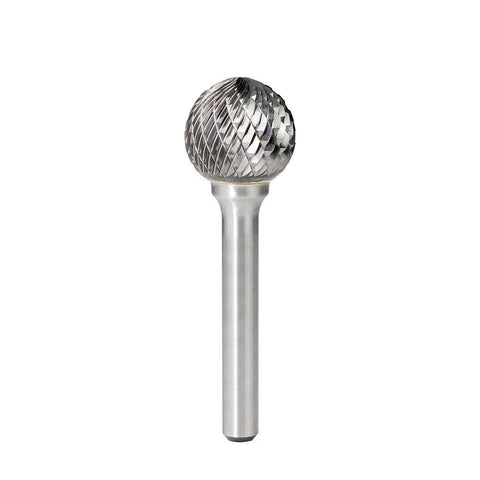
Diamond Burr vs. Carbide Burr: Understanding the Key Differences
When it comes to precision shaping, grinding, and cutting tasks in various materials, both diamond burrs and carbide burrs are essential tools. Though they may seem similar at a glance, the differences between them significantly affect their application and performance. Understanding these differences is crucial for selecting the right tool for the job, ensuring efficiency and achieving the desired results.
Diamond burrs are known for their unparalleled hardness, which comes from their construction. These burrs are coated with industrial-grade diamond particles, making them the hardest and most durable option available. Their primary advantage lies in their ability to handle extremely tough materials, such as glass, ceramics, stone, and even some metals. The hardness of diamond burrs allows them to achieve smooth, precision finishes, which is why they are commonly used in industries like dentistry, jewelry making, and glass engraving. The diamond coating is particularly effective in producing fine, detailed cuts or engravings, leaving minimal surface damage behind.
Carbide burrs, on the other hand, are made from tungsten carbide, one of the hardest metals known to man. While not as hard as diamond, tungsten carbide is still incredibly tough, boasting resistance to heat and wear. This makes carbide burrs ideal for high-speed applications in a variety of materials, especially metals like steel, stainless steel, and aluminum. They are widely used in industries such as automotive, aerospace, and metalworking, where durability and precision are key. Carbide burrs excel in removing material quickly and efficiently, whether it's deburring, cutting, or shaping metals and composites. Their sharp, fluted edges make them perfect for creating clean, precise cuts, and they can be used for a wide range of operations, including shaping, engraving, and even drilling.
One of the main differences between diamond burrs and carbide burrs is how they interact with the materials they are used on. Diamond burrs rely on abrasion, meaning they grind away material slowly and steadily, providing excellent control when working on brittle or delicate materials. This grinding action is smooth and precise, making it perfect for detailed work where finesse is required. On the other hand, carbide burrs use a cutting action. Their sharp, cutting flutes carve into the material, quickly removing large amounts of material in less time. This makes carbide burrs a better choice for tasks that require speed and aggressive material removal, such as shaping or grinding down hard metals.
Another key difference lies in the durability of the burrs themselves. While diamond burrs are excellent at maintaining their cutting edge for longer periods when used on hard materials, they can wear down relatively quickly if used on softer metals like aluminum. The softer material clogs the diamond burr's surface, reducing its effectiveness. Carbide burrs, by contrast, are better suited for cutting softer metals and can maintain their cutting ability over long periods when used in high-speed, high-impact operations. They are resistant to heat, which means they perform well in applications that generate a lot of friction, such as metal grinding.
Speed and versatility also come into play when comparing these two types of burrs. Diamond burrs are often used at lower speeds to ensure a controlled, precise finish, especially when working on materials like glass or ceramics that can crack or shatter under high pressure. Carbide burrs, however, thrive at higher speeds, often operating in the range of 25,000 to 35,000 RPM. This makes them a more versatile option for heavy-duty tasks that demand fast material removal without sacrificing accuracy.
Another consideration is the cost difference between diamond and carbide burrs. Diamond burrs tend to be more expensive due to the high cost of industrial diamond coating. However, the investment pays off when used for specific tasks that require their unique capabilities, such as engraving glass or ceramics. Carbide burrs, while more affordable, are equally valuable due to their longer lifespan when used on metals and their ability to handle a wide range of materials effectively. For users who frequently work with metal or other durable materials, carbide burrs often offer better value in terms of both cost and performance over time.
In summary, the choice between a diamond burr and a carbide burr ultimately depends on the material you're working with and the nature of the task at hand. Diamond burrs excel in applications where precision and a fine finish are essential, particularly when working with hard, brittle materials. Carbide burrs, with their strength and cutting efficiency, are best suited for tough metalworking tasks, offering fast material removal and durability under high-speed conditions. By understanding the strengths of each type of burr, you can select the tool that best suits your project, ensuring not only optimal results but also a smoother, more efficient workflow.
